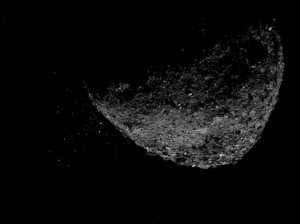Our movement and change through time and space are fundamental characteristics of what it means to be alive. Imagine a world where everything was still, no time, no past, no future, nothing. Without movement and change, absolutely nothing would exist. As much as the entropy of change eventually dooms us all, it also gives us life. There is no life without movement. There’s no life without change, time, and space.
The stars and planets give an overwhelming perspective on movement, change, space, and time. It’s fundamental to how we live our lives. Look at your watch. Have you ever wondered why an hour is 60 mins? Why are there 24 hours a day? Seven days in a week? Why do we have months, seasons, or years? Who made up the rule that months are around 30 days? Where did your zodiac sign come from? Where did “military time” come from?
The Greeks, Babylonians, Sumerians, and Egyptians all had their hand in how we tell time as well as creating the foundation for some of the language, math, and symbols we use to describe the heavens. Throughout these cultures, the one common theme is the dependence upon astronomy to measure change, or as we know it, time.
Our society has taken a step back from the knowledge of the mechanisms that govern our lives. Before there were iPhones, Google Maps, and smartwatches, we had the stars, planets, sextants, astrolabes, sundials, and celestial globes. The movement of celestial objects has always been the cornerstone of our existence. I’m not saying that we should go back to using these tools. I believe our fundamental understanding of astronomical basics in the context of time, movement, and distance on our planet will give us a strong basis for taking the next leap in human development and growth.
Smartphones are useful, but what happens in a situation when that technology is unavailable to us? Anyone should, at the very least, be able to tell the approximate time and direction based on where the Sun is in the sky on any given day. With that being said, below is a list of basic astronomical concepts that you should understand.
Astronomy Terms Everyone Should Know
Equinox: An equinox is one of two points in the year that marks the beginning of Spring around March 20th and the beginning of Autumn around September 23rd in the Northern Hemisphere. This works the opposite in the Southern Hemisphere. The Earth’s tilt of 23˚ determines the seasons, equinoxes, and solstices. As the Earth orbits the Sun at an angle, the Sun appears to move through the sky as seen at the same time every day. At Equinox, the poles are pointed neither away from nor towards the Sun. The Equinox marks the time in which the Sun appears directly overhead at the equator.
Solstice: A solstice is one of two points in the year that marks the summer season’s beginning around June 21th and Winter a season around December 21st in the Northern Hemisphere. This works the opposite in the Southern Hemisphere. At this point, the Sun reaches its highest point in the Northern hemisphere sky, simultaneously appearing at its lowest point in the Southern hemisphere’s sky.
Constellation: A constellation is an area in the nighttime sky in which a group of stars appears to form a pattern. Constellations can be objects, animals, people, or creatures. There are 88 constellations. Most constellations date back to ancient times and have received names from Roman and Greek mythology.
Asterism: An asterism is a prominent pattern or group of stars that is smaller than a constellation. The most popular asterisms are The Big Dipper and the Litter Dipper. These asterisms are apart of the constellations Ursa Major and Ursa Minor, respectively.
Ecliptic: The Ecliptic is the path the Sun traces across the sky over a year against the backdrop of distant stars. This path is also the plane in which the planets orbit the Sun. This plane corresponds to the Sun’s equator and the orbital plane of the entire Solar System. Constellations that ether cross or lie within the ecliptic are known as constellations of the Zodiac.
Zodiac: The Zodiac is the area of the sky 8˚ above and below the ecliptic. This area is significant because all most visible planetary bodies trace paths within this area. Because of its significance, the 12 constellations that reside in the Zodiac correspond to the 12 astrological signs of Aries, Taurus, Gemini, Cancer, Leo, Virgo, Libra, Scorpio, Sagittarius, Capricorn, Aquarius, and Pisces.
Retrograde Motion: Retrograde motion is the apparent change in motion of a planet through the sky. The planet appears to move backward after previously moving forward. This motion results from Earth overtaking the planet in its orbit around the Sun or vice versa. Think of passing a car on the highway.
Diurnal Motion: Diurnal motion is the daily, apparent motion of celestial objects such as the Sun, Moon, and stars across the sky from east to west around the two celestial poles. Diurnal motion is caused by the Earth’s rotation on its axis. One full rotation takes 23 hours, 56 minutes, and 4.09 seconds.
Right Ascension: Right ascension is a measurement on the celestial sphere parallel to longitude on a globe and perpendicular to the equator. An object’s right ascension is measured east to west, starting at the vernal Equinox on the celestial sphere. Right ascension is the “y” axis on a graph. Right ascension is measured in hours, minutes, and seconds.
Declination: Declination is a measurement in the form of imaginary lines on the celestial sphere. Declination lines run parallel to latitude lines on the Earth and perpendicular to Right Ascension lines on the celestial sphere. An object’s declination is measured north to south, starting at the equator on the celestial sphere. Declination is measured in degrees, arcminutes, and arcseconds.
Lunar Phases: We see lunar phases almost every other day, but never stop to think about them. The Moon’s phases are created by the Moon’s sunlit surface, as seen by an observer from Earth. There are eight distinct phases of the Moon, New Moon, Waxing Crescent, First Quarter, Waxing gibbous, Full Moon, Waning gibbous, Last Quarter, and the Waning crescent.
Analemma: An analemma is a pattern of the Sun’s position in the sky at the same time and place, every day, over a year. Analemmas are just as awe-inspiring as solar eclipses. The difference between an analemma and an eclipse is that an eclipse is only visible for a few seconds and gone. An analemma is not even a single event. It’s usually seen as a composite photo of the Sun at the same time and place in the sky over the course of a year. The combination of those photos produces an asymmetric figure 8.
An analemma’s beauty lies in the fact that it is an image of the Earth’s celestial dance around the Sun. The analemma’s shape communicates the Earth’s axial tilt, the eccentricity of Earth’s orbit, and the change of orbital speed of the Earth as it veers closer to the Sun in the winter months.
It took me some time to draw a mental picture of how all these components work together, but it can’t be unseen once you see it. It’s mathematical perfection.
Additional Astronomy Vocabulary
Obliquity: Obliquity or an axial tilt is the angle between an astronomical object’s equatorial plane and orbital plane. The Earth’s axial tilt is 23.44°. This means that the Earth’s equator is at a 23.44° angular distance from the ecliptic. Obliquity is the cause of seasons on Earth. During the summer months, the northern hemisphere is tilted towards the Sun and vice versa via during the winter months.
Transit: A transit is when a celestial body passes directly between a larger body and the observer. The transiting body appears to move across the larger body’s face, covering a small portion of the larger body. Unlike an eclipse, transiting objects do not cast a shadow upon the observer.
Occultation: An occultation is an event that occurs when one celestial object passes in front of another celestial object from the perspective of an observer, thereby hiding the later celestial object from view. A solar eclipse is an occultation, whereas a lunar eclipse is not an occultation.
Eclipse: An eclipse is when a celestial object obscures another celestial object from the observer’s view. The former celestial object is either partially or entirely covered.
Syzygy: A syzygy is the alignment of three or more celestial objects within a gravitational system.
Conjunction: A conjunction is an apparent or observational meeting or passing of two or more celestial bodies in the sky. Conjunctions usually involve two celestial objects within our Solar System or an object in the Solar System and a distant astronomical object.
Opposition: Opposition is when two celestial objects appear in the sky’s opposite directions as seen from an observer. These objects are in direct opposition to each other on the celestial sphere. When the Moon is full, it is in opposition to the Sun since it is directly opposite the Sun as seen from an observer on Earth.
Celestial Sphere: The celestial sphere is an imaginary sphere surrounding the Earth in which all objects in the sky are projected upon the inner surface of the celestial sphere. Using this sphere, all objects in the sky can be relatively measured, and their locations pinpointed based on the observer’s position on Earth. The celestial sphere uses right ascension and declination lines of measurement, which correlate to longitude and latitude.
Star: A star is a self-luminous, spheroid body of plasma held together by its gravity. Many stars are visible to the naked eye on Earth in the nighttime sky but appear as fixed points of light due to their great distance from Earth. The Sun is the nearest star to Earth. Like our Sun, most stars host a system of planets.
Absolute magnitude: Absolute magnitude is a measurement of the brightness of an astronomical object relative to other astronomical objects. Absolute magnitude is different from apparent magnitude because it measures astronomical objects’ brightness as if they are all the same distance from Earth without anything obscuring its light.
Apparent magnitude: Apparent magnitude is a measurement of the natural brightness of a celestial object observed from Earth without considering the object’s distance or anything obscuring its light. This measurement is simply a measurement of how bright the object appears.
Zenith: A zenith is an imaginary point directly “above” an observer or a particular location. It can also be described as the vertical direction opposite to the apparent gravitational force at that location.
Meridian: An observer’s meridian is an imaginary line that passes through an observer’s zenith (the point in the sky directly overhead), nadir (directly below), and directly north and south of an observer’s horizon, thereby creating a great circle. The median is perpendicular to the celestial equator and the horizon.
Celestial Meridian: The celestial meridian is an imaginary line that passes through an observer’s zenith (the point in the sky directly overhead) and the two celestial poles. Celestial objects such as stars transit an observer’s celestial median every 24 hours.
Nadir: The nadir is the imaginary point directly below an observer and directly opposite the zenith. A nadir point can also be described as the vertical direction pointing towards the apparent gravitational force at that location.
Azimuth: An azimuth is the angle between a celestial body and a specific point, usually north or south, measured clockwise around the observer’s horizon. This angle lies flat on the Earth’s surface and is perpendicular to the measurement of altitude.
Altitude: The altitude is the angle measured upwards from the observer’s horizon to a celestial body. Objects at the horizon have a designation of 0° while objects at the zenith are designated 90°. The altitude is perpendicular to the measurement of Azimuth.
Orbital Inclination: An astronomical body’s orbital inclination is a measure of the tilt or inclination of an orbital plane in reference to another plane. The ecliptic, the plane in which the Earth orbits the Sun, serves as the reference plane in which other planet’s inclination is measured. The Moon orbits the Earth at an orbital inclination of 5.14°.
Longitude: Longitude is a measurement in the form of imaginary lines on the Earth’s surface that runs perpendicular to latitude lines. Longitude lines run parallel to Right Ascension lines on and perpendicular to declination on the celestial sphere. An object’s longitude is measured east to west, starting at the prime meridian. Latitude is measured in degrees and minutes.
Latitude: Latitude is a measurement in the form of imaginary lines on the Earth’s surface that runs perpendicular to longitude lines. Latitude lines run parallel to Declination lines on and perpendicular to right ascension on the celestial sphere. An object’s latitude is measured north to south, starting at the Earth’s equator on the globe. Latitude is measured in degrees and minutes.
Solstitial Colure: The solstitial colure is a celestial meridian of the celestial sphere that passes through the celestial poles and the hibernal (winter) and estival (summer) solstices of the celestial sphere.
Equinoctial Colure: The equinoctial colure is a celestial meridian of the celestial sphere which passes through the celestial poles and the vernal and autumnal equinoxes of the celestial sphere.
Hour Angle: An hour angle is the angular distance between an observer’s meridian and an hour circle in which a celestial body lies. The angle is expressed in hours and minutes, corresponding to the time elapsed since the celestial body’s crossing of the observer’s meridian. The hour angle is related to right ascension and can be measured in degrees, with 15° being equivalent to an hour. A closed fist held up to the sky is approximately one hour.
Sidereal Period: The sidereal period is the time required for a celestial body within the Solar System to complete one revolution around the celestial sphere or the backdrop of distant stars. The sidereal period is a little shorter than the Synodic period since the synodic period is extended slightly by the Earth’s revolution around the Sun.
Synodic Period: A Synodic period is the time required for a celestial body within the Solar System, such as the Moon, planet, or an artificial satellite, to return to the same approximate position in the sky relative to the Sun as seen by an observer on Earth. This term is often used to refer to the time it takes for the Moon to cycle through its phases instead of the Moon’s orbital period, which is the Moon’s sidereal period.
Horizon: The horizon is the apparent line that separates land or the Earth from the sky from the perspective of an observer.
- The Solar Republic Card Game — The Solar Republic Card game is a game based on the Sun, planets, and moons of our Solar System. These celestial bodies are represented as astronomical symbols on each card within a deck with many similarities to the standard 52 card deck of playing cards.
- The Solar Republic Website — Fresh perspectives on space exploration and astronomy. We strive to bring out the cool side of space through fun games, education, insights, and advocacy.
- The Solar Republic Blog — A publication dedicated to all things astronomy and the exploration of space. We are dedicated to expanding your knowledge of astronomy, stargazing, our solar system, and space exploration.
- The Solar Republic Store — features the card game as well as other space-related merchandise such as cool posters, mugs, and athletic gear.
- The Solar Republic Facebook Page
- The Solar Republic Instagram Page
Quincy Bingham is a native Mississippian, world traveler, and digital marketing director. Although his bread and butter is digital marketing, his crowning achievement has been the Solar Republic brand, which embodies his values of kaizen, personal development, and lifestyle design. He has learned through professional and personal experience that change is the only constant in life, trust is the only real currency and consistency is the only vehicle that gets you to where you want to be in life.
He currently resides in Chicago, IL where he assists businesses, agencies, and non-profits grow their organizations with digital marketing and growth hacking principles.



